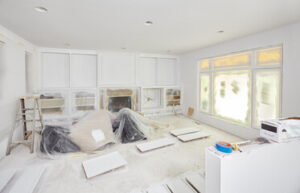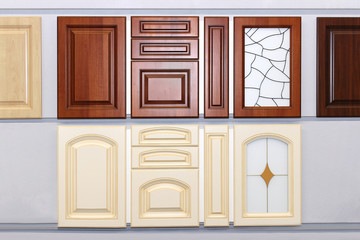Cabinet Painters will give your kitchen a fresh new look that’s both durable and long-lasting. Professionals use high-quality materials and specialized tools to achieve flawless results that will stand up to the wear and tear of daily life in your kitchen.

They’ll also take the time to thoroughly clean, sand, and prime surfaces, which is crucial to achieving great results.
Cabinet painting is a highly specialized process, and it demands a lot of time. It requires sanding, priming, and multiple coats of a specialized cabinet paint to ensure a flawless finish that stands up to the test of time. Many DIY homeowners skip these steps in order to save time and money, but this can lead to flaws such as chipping or unevenness.
Choosing the right materials is also vital to a successful outcome. Premium paints use high concentrations of pigments, resins, and additives to create a more durable finish that resists mildew and spoiling. In contrast, standard paints typically contain more water and lower-quality binders that can cause the paint to crack, peel, or bubble over time.
Commercial spaces are often subject to harsher conditions than residential ones, so the paints used must be able to stand up to heavy wear and tear. Professionals understand this and use high-quality cabinet paints and finishes that can withstand frequent handling, heat, moisture, and grease. These products offer a long-lasting finish that elevates the look of any space and helps promote brand identity.
Whether you’re looking for a timeless white or a modern two-tone look, Cabinet Painters can help you find the perfect color and finish to complement your style. They can even guide you through the decision-making process, taking into account factors like lighting and trends.
Replacing your cabinets entirely can be expensive, but hiring Cabinet Painters is an affordable alternative that will add value to your home. They can refresh your existing cabinets with a fresh new look for a fraction of the cost of replacing them, and they’ll ensure that the finish is durable enough to stand up to years of use.
When choosing a cabinet painter, it’s important to ask about their experience and credentials. Check out their website, reviews, and portfolio to get an idea of the quality of their work. You can also ask them to walk you through their process and explain what types of products they use to achieve a flawless result. Doing so can save you from costly mistakes down the road and ensure a beautiful finish that lasts.
They Save You Time
Cabinet painting is a time-consuming project that requires a lot of prep work. It involves removing cabinet doors and hardware, washing and scrubbing each surface, sanding and priming, and applying multiple coats of specialized paint. Cabinet painters know how to complete these steps efficiently, which saves you a lot of time and money in the long run.
In addition, they have access to high-quality materials and specialized tools that would be difficult or impossible for homeowners to purchase on their own. These professional-grade tools ensure a flawless finish that stands up to years of wear and tear, saving you from costly repainting or repairs down the road.
Homeowners can spend weeks trying to finish the task themselves. In many cases, the process is time-consuming because of the need to set up a workspace, wait for the cabinets to dry in between each coat, and avoid using the kitchen during the entire process. In contrast, professional cabinet painters can get the job done in half the time with less hassle, leaving you more time to relax or focus on other tasks.
Kitchen cabinet painting is a complex and detailed project that requires special tools, equipment, and techniques. While the DIY route may seem appealing, it can lead to sub-par results that are costly in the long run. Budget shortcuts can result in visible brushstrokes, uneven colors, and early peeling. Professionals know how to get the job done right the first time and use the best materials, which ensures a beautiful finish that lasts for years.
Another critical difference between DIY and professional cabinet painting is the type of paint used. Cabinets are exposed to moisture, heat, grease, and food spills on a daily basis, which can damage or dull household paints. Professionals use water-based cabinet-specific paints that stand up to these conditions and maintain their durability and appearance over time.
Lastly, cabinet painting professionals understand how to tint primer to achieve the proper color. It’s important to tint primer only a small amount so that it doesn’t lose its bonding strength. Tinting the primer also helps save on cost by allowing you to apply fewer coats of paint.
They Avoid Common Mistakes
Cabinet painting is much more detailed than house painting, and it requires specialized tools and techniques to ensure a long-lasting and professional finish. Hiring a house painter who is not familiar with the specific needs of kitchen cabinets can result in shortcuts that compromise the outcome. For example, if the surface is not properly prepared (degreasing, sanding, priming) or if high-quality paint is used that doesn’t meet cabinet manufacturer standards, the results can be disappointing and require expensive touch-ups.
Cabinet painters are experienced and have the skills to complete the job correctly, saving you time and money in the long run. They are also color experts, and can help you select colors that complement your home and reflect your personal style. Often, they will provide a sample of the color to you before starting work so that you can be sure it looks great in your kitchen.
One of the most common mistakes people make when painting their own cabinets is skipping or rushing the surface preparation process. This includes removing doors and hardware, degreasing, sanding, and priming the surfaces before applying the paint. If these steps are not completed correctly, the paint will begin to peel or bubble sooner than expected.
Another mistake people make is using too thick a coat of paint or failing to let the paint dry between coats. This can lead to uneven textures, visible brush marks, and chipping. Cabinet painters apply thin, even coats and allow the paint to fully dry between applications.
Finally, it is important to use a water-based polyurethane sealant over the finished product to protect the surface and add durability. This step is often skipped or done incorrectly, which can result in a dull finish that attracts more dust and grime than the original surface.
A fresh coat of paint on your cabinets can make a world of difference in the look and feel of your kitchen. Cabinet painters are skilled at their craft and can achieve a beautiful, professional-looking finish that will stand up to years of wear and tear. In addition, they can save you money by avoiding the costs of replacing your cabinets and can increase the value of your home if you are planning to sell in the future.
They Add Value to Your Home
Cabinet painting is a cost-effective way to transform the entire look of your kitchen. It improves durability, eases maintenance, and adds a significant boost to overall home value. A quality paint job offers a high ROI, a desirable trait for homeowners looking to sell their properties.
Professional cabinet painters can also unify mismatched cabinets and create visual harmony. By using paint techniques like glaze or ombre effects, they can create dramatic designs that elevate the style of your kitchen.
They use specialized products and tools, including water-based acrylics and polyurethane blends. These materials are designed for cabinetry, ensuring long-lasting results that resist chipping and peeling. House painters, on the other hand, typically use latex wall paint. This material isn’t suitable for cabinetry and may produce undesirable outcomes.
Pros know how to prepare surfaces, apply multiple coats of paint evenly, and use finishing techniques for a smooth and flawless result. In addition, they can complete the job quickly and efficiently. This saves you money on labor and allows you to enjoy your updated kitchen sooner.
While DIYers are often tempted to take on cabinet painting projects themselves, it isn’t as simple as it looks. Many homeowners don’t understand the proper process involved in cabinet painting and end up with sub-par results that require costly repairs or repainting. Professionals have years of experience and the training needed to ensure a flawless finish that will stand up to regular wear and tear.
Choosing the right products, proper surface preparation, and applying multiple coats of specialized paint is vital to achieving a beautiful finish that will last. Professionals are up to date on the latest trends in interior design and have the expertise to choose a color that complements your space. They also have the experience to avoid common mistakes that amateur painters can make, saving you money and ensuring a flawless result. In addition, they can offer warranty and touch-up plans that will give you peace of mind if any damage or flaws arise in the future.
